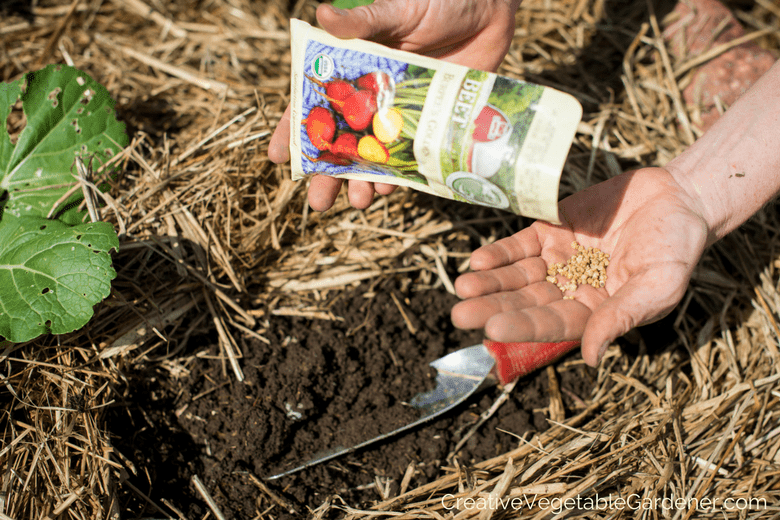
In Wisconsin zone 5 where I garden, my average last frost is around the second week in May. It’s very common for me to hear other gardeners say, “I just go out and plant my whole garden at the end of May.”
This is not the way I recommend you approach your garden – planting everything at once. If you do, you’re going to grow a lot less food than you could with a better planting schedule.
Why? Because there are actually four seasons in the garden if you live in a colder weather climate like me – early spring, late spring, summer, and fall.
If you want to get the most possible food from your garden you need to plant in as many of those seasons as possible.
If you wait until after your average last frost to start planting, then you’re most likely missing out on the early spring season, which is when many plants thrive!
The technique of planting everything at once in your garden is representative of two big mistakes a lot of gardeners make.
Mistake #1: Waiting too long to plant seeds and plants in spring.
There are many cool-season vegetables that can be planted before your average last frost date. They can withstand the light frosts of the early weeks of the growing season. And in fact, these vegetables often grow best in cooler temperatures.
If you’ve ever had trouble with your arugula, cilantro, spinach, or lettuce bolting within a few weeks of planting them in your garden, it may be because you’re planting too late.
Mistake #2: Not continuing to plant throughout the season.
This technique is commonly called succession planting.
In my garden (remember, zone 5), I usually start planting in my cold frames and low tunnels in early March. In mid-April, I start planting in the garden in my regular uncovered beds and don’t stop planting until the beginning of September.
That’s about six months of planting both seeds and plants at regular intervals.
This continual planting, or succession planting, will ensure you have a steady harvest of delicious vegetables for as many weeks of the season as possible.
Most years, I start harvesting in March (from last year’s fall spinach) and continue filling my harvest baskets and bowls throughout the spring, summer, and fall, all the way up until the beginning of December. That’s 10 months of harvests!
Don’t worry, it’s not as complicated as it sounds. Especially if you create a planting schedule for yourself that easily leads you through what to do each week of the spring and early summer.
How to Create Your Custom Planting Schedule
Just because I plant in mid-April doesn’t mean you should do the same. Your planting schedule depends on where you live and garden.
Mid-April is about four weeks before my average last frost, but your last frost might be earlier or later than mine, so you’ll want to determine your planting calendar according to that date.
Step #1: Figure out your average last frost.
To create your own vegetable planting calendar, your first step is to figure out your average last frost date. The best way to do this is to go to the website plantmaps.com and enter in your zip code.
It will pull up lots of information about your area, including your average last frost. It lists a date range, so if you want to be on the safe side you can pick a date at the end of the range for your last frost.
I’ve found that the last frost dates you find online can sometimes differ a bit from one another, so consider consulting several different sources and then deciding what date to pick for your last frost.
One of the best sources of this information is your local university extension office. Simply Google something like “average last frost dates University of [your state] Extension”.
Keep in mind that the actual day of the last frost can vary widely from year to year, especially with changing climate conditions.
Although my average last frost is usually around Mother’s Day, we have had frosts as late as Memorial Day Weekend. (I lost all of my peppers plants that weekend. True story!)
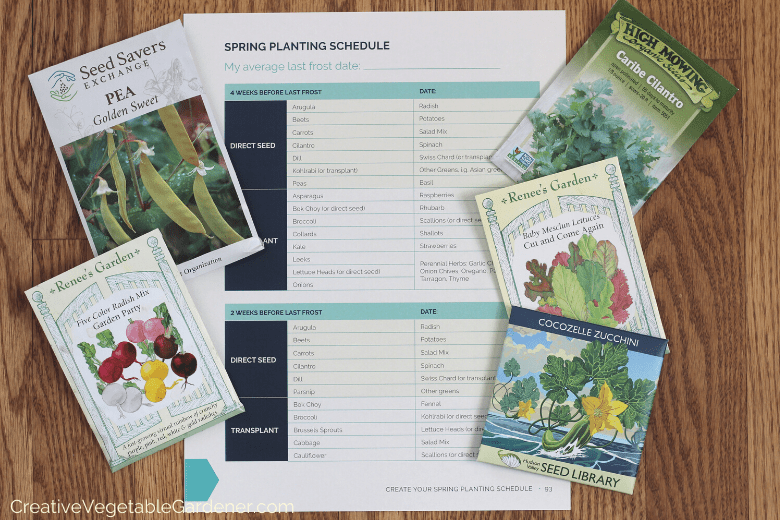
Step #2: Grab your supplies.
To prepare for step three, you’ll need to print out this Spring Planting Schedule template. It’s one of the worksheets in my book, Smart Start Garden Planner.
You’ll also need a pen or pencil and a calendar, either print or on your phone or computer.
A planting schedule is just one element in your gardening journal template. Other parts include a binder, a place to keep vegetable specific records, and a map of your garden.
Step #3: Fill in the dates on your vegetable planting calendar.
Now that you’ve figured out your average last frost and gathered your supplies, it’s time to create your personal planting plan.
Fill in your average last frost date at the top of the worksheet. If you’re nervous about picking one date, it’s fine to put a range down.
Then, use your calendar to count backward and forward from your last frost date to fill in the rest of the dates on your planting schedule – 4 weeks before last frost, 2 weeks before last frost, 2 weeks after last frost, etc.

Step #4: Understanding & using your vegetable planting schedule.
Frost tolerant vegetables.
There are two big categories of vegetable plants – the ones that can survive a frost in the garden (frost tolerant vegetables) and the ones that will get killed by frost (non-frost tolerant vegetables).
You need to be very familiar with which vegetables fall into each category so you can make sure you’re planting the right vegetable at the right time in the season for it to grow and thrive (and not die!).
If you plant a tomato seedling, which is not frost tolerant, too early in spring and then your garden gets hits by a frost one night, your plant will likely be killed or severely damaged.
The great thing about the planting schedule is that these two categories are basically spelled out for you. Vegetables that are listed in the weeks before the average last frost date are frost tolerant and the vegetables that are listed at and after your last frost date are not frost tolerant.
Read more about frost tolerant vegetables.
Use the dates as a guide.
These dates are meant to be a guide for you, not something that’s set in stone. You may need to tweak them to fit the climate of your garden and find the best planting times for each vegetable on your list.
You should be keeping records each year of what variety you plant of each vegetable, how many, and the date. Ideally, you’re doing this on your garden map so you’re also recording the location of where you’re planting everything in your garden for crop rotation.
Read more about creating a garden map and see a copy of mine here.
With a map, you’ll have a record of the dates you’ve planted each vegetable every year and eventually you might decide to shift them backward or forward.
Even with the planting schedule, make sure you always check the weather before planting anything in your garden and pay special attention to the extended forecast.
In early spring, if there’s a chance of very low temperatures, snow, or other inclement weather, hold off on planting until it passes. There’s a fine line between planting early and planting too early.
Plants can get stressed if a few inches of snow dumps on them right after planting. Sometimes this means they’ll never recover to perform at their best.
I had stunted onions several years ago because they went through a snowstorm when they were very young. They never really grew to their full size that season.
Later in spring, around your average last frost date, is another time you need to keep a close eye on the weather forecast. If there’s any chance of temperatures in the mid- to low-thirties F, hold off on planting vegetables that can’t survive a frost.
Any vegetables you’re planting after your average last frost are not very cold tolerant and will die if there’s a frost.

Use your planting calendar to help with succession planting
You may notice that some vegetables are listed more than once on the planting calendar (arugula, beets, carrots, cilantro). These are great for succession planting!
Succession planting means sowing seeds or plants several times throughout the season for a continued supply.
For example, if you plant an entire bed full of beets, they’ll all be ready for harvest at about the same time and you might have more beets than you can possibly eat.
Instead, you can plant a small row of beets every two to three weeks in spring so you have a more gradual harvest, not a huge deluge at one time.
If you have a small garden or don’t want to use succession planting, you can plant the vegetables that are listed multiple times in any of the weeks they’re listed.
Direct seed vs. transplant
The vegetables on the planting schedule are also divided between direct seed and transplant to help you figure out whether you’ll be planting each one by a seed or by a plant.
This information is helpful because you’ll need to make sure you’ve bought the seeds you need and either started plants indoors or have a plan for purchasing them from a local nursery or farmers market.
If you’re unclear about direct seeding vs. transplanting, read over this blog post about direct seeding.
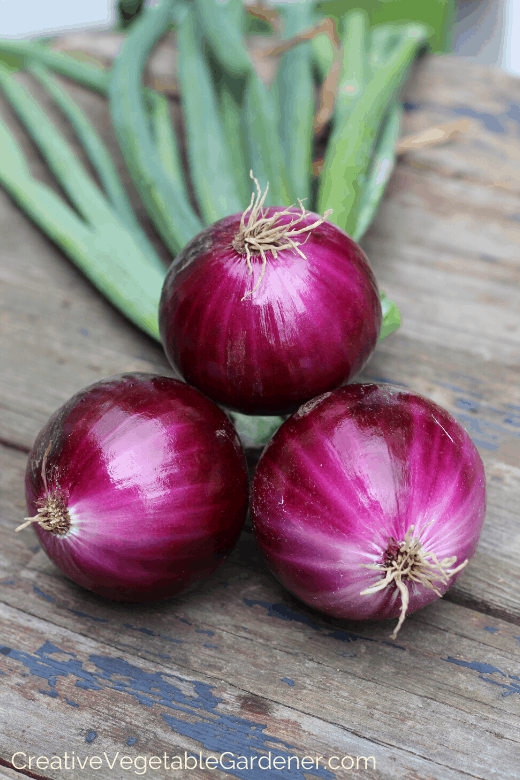
Why Timing Matters in the Spring Vegetable Garden
If you want to have success growing food, you have to make sure you’re planting each vegetable at the best time for it to grow and thrive. Here are some consequences of not planting at the appropriate time.
Vegetables Won’t Grow to Full Size
I love growing onions! I plant between 300-500 every year and store them in my basement so we can eat them all winter. But, they can be a little picky about how they’re grown, especially if they’re not planted at the right time.
Onions are day-length sensitive. This means that when the number of hours of daylight gets above a certain point the onion starts making a bulb. When onions start bulbing up depends on where you live and what variety you’re growing. In northern climates, they start forming their bulbs around the summer solstice in June.
They use the green growth of their leaves to fuel the growth of the bulb. So, if you have tiny onion plants you’ll most likely get tiny bulbs. How do you make sure your onions have time to put on a lot of healthy, green growth?
You make sure to plant them early in spring. Mine go into my garden about four weeks before my average last frost.
If you’ve planted onions really late in the past and they haven’t grown to full size, now you know why. Make sure you plant them early this year. If you time it right you can grow onions that are the size of softballs! (More tips on growing onions.)

Vegetables Will Bolt
Have you heard of the term bolting? If you’ve planted lettuce, cilantro, spinach, or other spring greens you may have noticed that they eventually send up a flower stalk from the middle of the plant. This is called bolting. It’s a natural process that signals the plant is getting ready to flower and produce seeds for reproduction.
Unfortunately, bolting causes the plants to become bitter-tasting and much less appealing for eating. Bolting often caused by increasing day length and temperature, which is something that happens naturally as we move towards summer.
Most of the early spring vegetables like cooler weather and shorter days. This means that the earlier you plant your spring vegetables the happier they’re going to be (within reason, of course).
I plant things like spinach, lettuce, salad greens, cilantro, radishes, and bok choy four weeks before my last frost. You will, too, if you use the planting schedule in this post!
This gives them plenty of time to grow and produce a harvest in the cooler temperatures of my spring garden.

Vegetables Might Die
One year as I was rushing to go on a weekend canoe and camping trip for Memorial Day Weekend, I decided to plant my pepper seedlings into my community garden plot so I wouldn’t have to get a neighbor to water my seedlings.
When I came back at the end of the weekend my pepper plants looked terrible. It took me a few moments to realize we had gotten a late frost while I was away.
Most of the peppers ended up dying, and I had to scramble around to get extra plants from friends and purchase some from the farmers market.
I learned an important lesson that year – don’t rush the season.
Many things we plant in spring are frost tolerant vegetables, which means they can easily survive when temperatures hover at or below 32 degrees F. But, the vegetables we plant after our average last frost, like peppers, fall into another category of plants, vegetables that are not frost tolerant.
This means that if your garden gets a cold snap (temps around 32 degrees F), or frost, the plants will get damaged (at best) and possibly end up dead.
This is not fun when it happens. Trust me…I almost cried that day.
This is a great reminder to use the vegetable planting schedule as a guide. You still need to check the extended forecast before planting frost sensitive crops. Just because the planting guide says it’s time to put your peppers out into the garden doesn’t mean you should if there’s an upcoming chance of frost.

Using a planting calendar and planting early in spring will help you get amazing harvests like this one!
Additional Resources for Spring Planting
Having a planting schedule helps you figure out what you should be doing in the garden each week in spring. But, remember, it’s important to keep notes on when you plant each vegetable so you can tweak your garden planting calendar over time to fit your individual situation.
Planting doesn’t stop six weeks after your last frost. I continue to plant in my garden up until 4-6 weeks before my first frost in fall. This ensures I have a robust fall and early winter garden which supplies me with food for Thanksgiving, Christmas and beyond! But, that’s a topic for another blog post. Or, you can take my online class – Harvesting Fresh Veggies in the Snow.
My book, Smart Start Garden Planner, will help you work through creating a personalized garden plan for this season. It’s packed full of beautiful photos, tons of worksheets, and tips and techniques to create your own blueprint for what a successful season in your garden looks like.
.
.
You can find my favorite garden tools, supplies, books and more in my Amazon storefront.
Having a planting schedule for your garden is one of the best ways to get the most food possible because it keeps you on track. It’s like a little nudge each week to get out there and get planting!
If you live in a short season area like I do in Wisconsin, it’s important to plant early and often so that you maximize the gardening season with frequent and abundant harvests. The delicious food we harvest from our gardens for dinner is what makes gardening so worth it, right?
As a fun bonus, I created a companion video to this post to walk you through the process of creating your custom planting schedule.
.


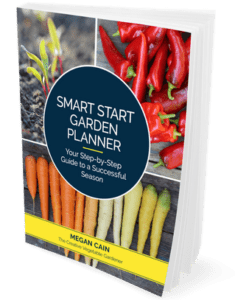



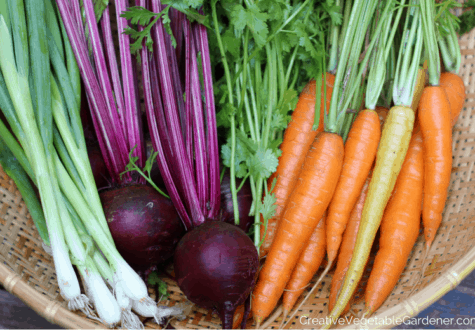
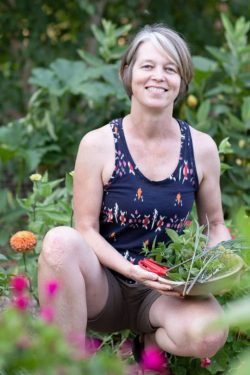

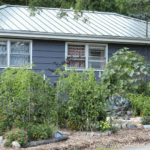
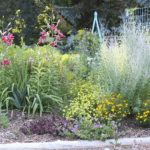
Comments
That spinach would be great right about now since all spinach is being recalled because of e-coli. Wish I had me some fresh spinach – next year!
Hi Karen- I need help and don”t know who else to ask! So, since you posted this, I felt I could ask you without coming at you from outta the blue. I planted lacinato kale seeds in small peat pots and they grew pretty well. They are so long and leggy, though. They still are only a couple of inches tall and they have no breadth to their stems, or whatever they”re called. I don”t have growing lights, but move them around all day to keep them getting some kind of light. Then, I think I made an almost deadly error by giving them water soluble fertilizer. They almost all died, but somehow made it through that. Is there anything I can do to help them grow better? Or should I give up and get plantings from the store. I live in the US in MD and it”s been one cold spring. These seedlings I have are about 3-4 weeks old. Am I just wasting my time? Thanks for any help you can offer!
We’d love to offer you some gardening help over in our free Facebook group: https://www.facebook.com/groups/MakeYourHarvestLast/
Getting a planting schedule together is such an important point. And staggering. I need to do more of that! Thanks for the post.
Love that I saw this in March so I can get organized!
Love your ideas! And I would love to be able to use them! However, seems no information really helping when I’m in zone 10a & have no frost. How do I know how to schedule that in? (So California)
Hi DeAnna- This post is written for people who experience frosts in their gardens. If you live in southern CA I’d suggest finding a planting calendar made specficially for your unique climate. Good luck!